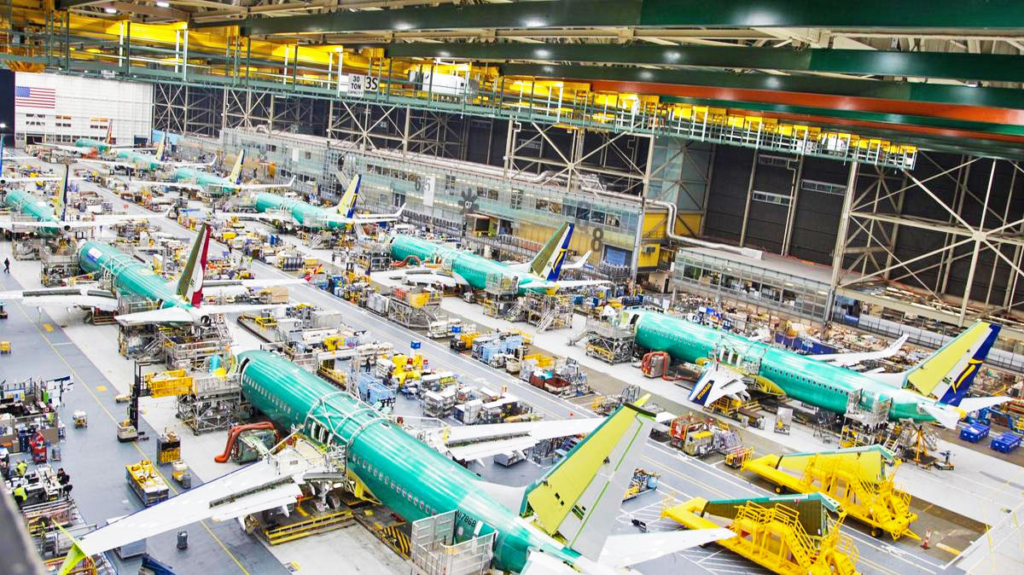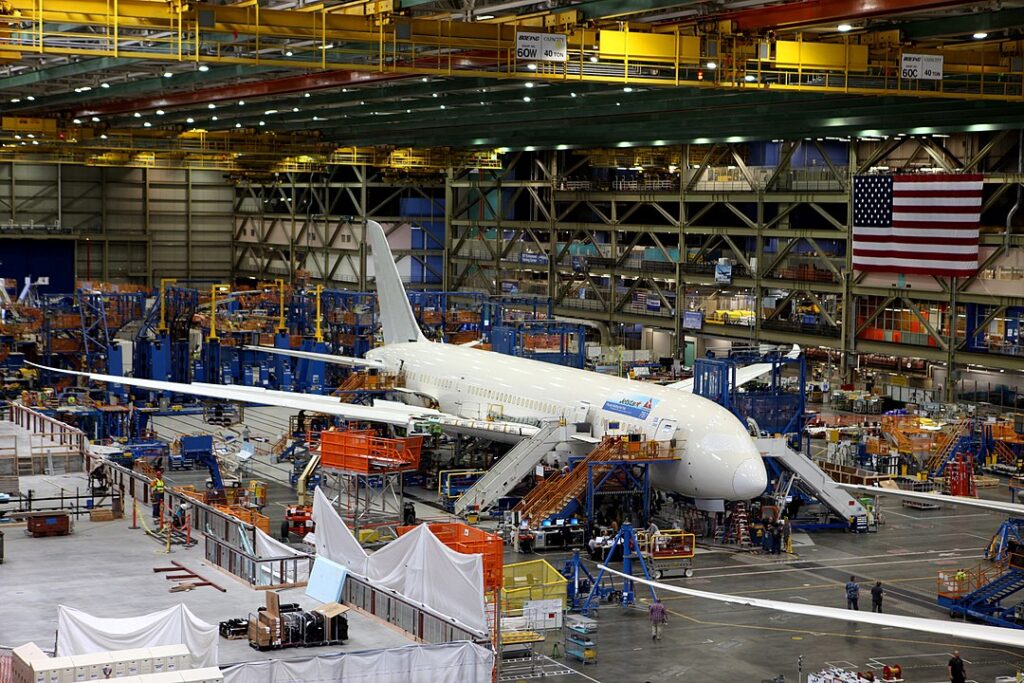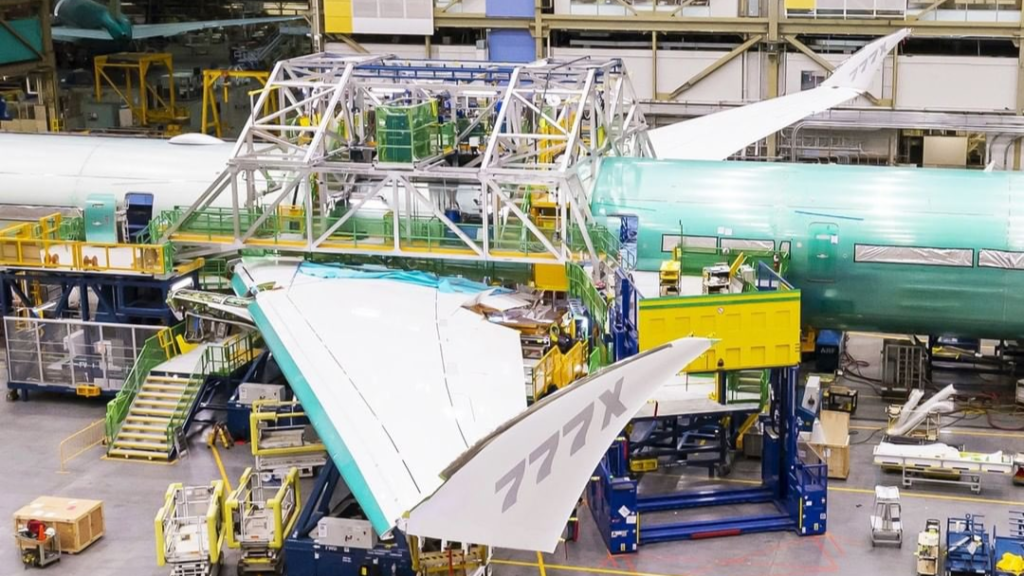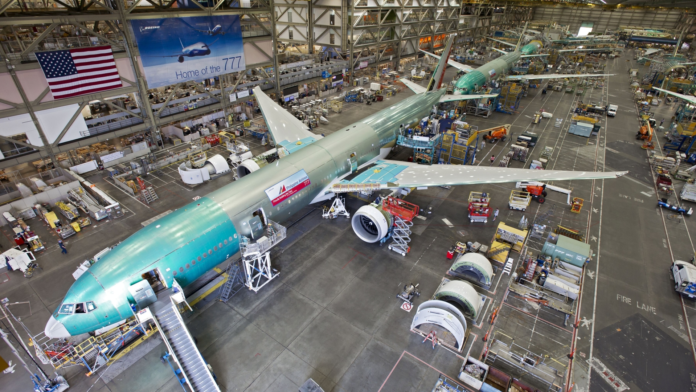SEATTLE- The machinist’s strike at Boeing, which began on September 13, poses a significant risk to the company’s financial recovery and production goals.
Boeing’s Chief Financial Officer, Brian West, stated during a Morgan Stanley investor conference that the strike will impede the company’s plan to increase 737 production to 38 units per month by year-end.

Boeing Machinist Strike
The work stoppage will also affect 787 deliveries, despite these aircraft being produced in a non-union facility.
West emphasized that the financial impact of the strike depends on its duration and could jeopardize Boeing’s ongoing recovery efforts. The strike commenced after 95% of machinists voted to reject a tentative employment contract on September 12. This proposed agreement would have provided an average wage increase of 25% over four years.
Initially, the International Association of Machinists sought a 40% wage increase. Union leaders had endorsed the tentative deal and urged members to accept it. However, the rank-and-file members overwhelmingly rejected the offer, surprising Boeing executives.
The strike has halted operations at Boeing’s Renton facility, where the company assembles 737 MAX and 737NG-based P-8 military surveillance aircraft. Production has also stopped at the Everett site, which is responsible for assembling 777, 767, and 767-based KC-46 aircraft.
Additionally, work has ceased at various sites in Washington and Oregon where Boeing fabricates tools, kits, and assemblies for aircraft electric systems, interiors, and propulsion.
In response to the work stoppage, Boeing has initiated procedures to store aircraft and components.
A source close to Boeing’s operations reveals that the company might deliver a small number of jets during the strike period. These aircraft, estimated to be in single digits, have already received airworthiness certificates from the Federal Aviation Administration (FAA).
Analysts predict the strike could extend for several weeks. Boeing’s new Chief Executive, Kelly Ortberg, has personally engaged in negotiations, aiming to rebuild trust with employees and the union.

Effect on 787 Production
While Boeing’s non-unionized 787 production site in North Charleston, South Carolina continues to operate, the company faces challenges in meeting its goal of increasing 787 production to five units monthly by year-end.
The strike will impede deliveries of previously produced 787s, as Chief Financial Officer Brian West explains that final work on these aircraft occurs in Everett.
Boeing has been working to reduce its 787 stockpile accumulated during previous delivery pauses. The current situation further complicates this effort.
West emphasizes Boeing’s focus on maximizing cash conservation and maintaining its investment-grade credit rating. Analysts consider this a critical task, with Bloomberg Intelligence analyst George Ferguson noting that Boeing’s cash balance of $10.9 billion at the end of June represents the minimum required for operations.
Boeing remains open to raising cash to stabilize its operations and support its suppliers. However, West acknowledges that achieving these objectives has become more challenging due to the strike.

Unresolved 777X Issues
Boeing is assessing the impact of a thrust-link problem on the 777-9’s (777X) service-entry timeline. Chief Financial Officer Brian West states that the company must fully understand the issue before determining its effect on the aircraft’s certification progress.
West emphasizes that the team is working to identify the root cause and develop corrective actions. Once these steps are completed, Boeing will be able to evaluate any potential schedule impacts. The company aims to have the 777-9 in operation by 2025.
On August 29, Boeing grounded its fleet of five 777-9 test aircraft after discovering a failed engine-related component during a scheduled maintenance check in Kona, Hawaii. The company described the failed part as a structural component connecting the engine to the airplane structure, later identified as a thrust link.
Thrust links play a crucial role in transferring engine thrust to the aircraft’s structure. The failure of this component raises concerns about the aircraft’s structural integrity and performance.
Boeing’s team is now replacing the faulty part and analyzing the incident to prevent future occurrences. The company will resume flight testing once it ensures the safety and reliability of the aircraft.
Stay tuned with us. Further, follow us on social media for the latest updates.
Join us on Telegram Group for the Latest Aviation Updates. Subsequently, follow us on Google News.
The post Boeing Machinist Strike Stops 737 MAX and 777 Production But Affect Non-Unionize 787, How? appeared first on Aviation A2Z.

